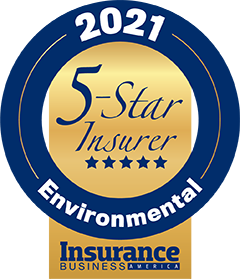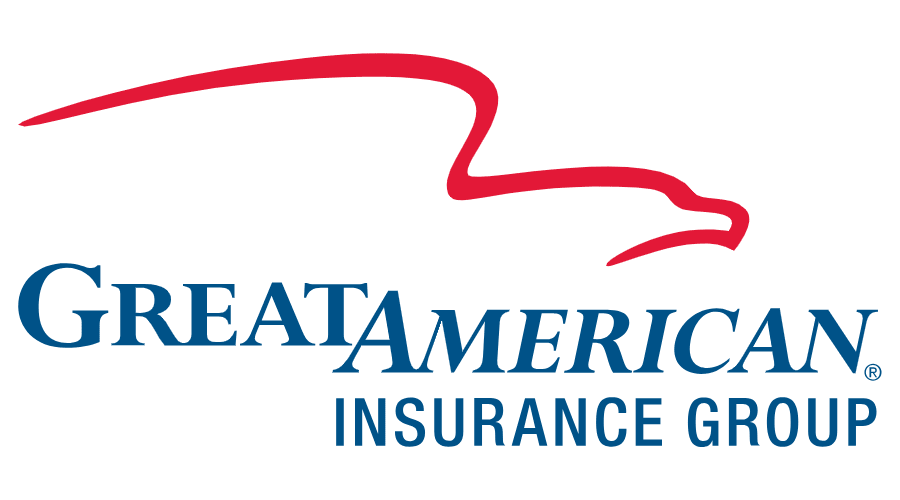
Five-Star Awards : Environmental Insurance
Environmental insurance, also known as pollution insurance, goes beyond property and general liability insurance policies to cover losses from pollutants. Typical damages or losses include everything from claims for business interruption to property damage to bodily injury.
In Willis Towers Watson’s recent Insurance Marketplace Realities 2021: Environmental report, environmental broking leader Brian McBride noted that an increase in mergers and acquisitions and rebounding construction activity following COVID-19 delays could drive record environmental placements in 2021.
“Incumbent markets will attempt to increase rates on their multi-year renewals,” McBride predicted, “but increased appetites from their competition will keep premiums in check for clients with excellent loss histories.”
Other trends he foresees for 2021 include an expansion in underwriting capacity from E&S carriers who entered the retail environmental market in 2020. In addition, “clients facing hardening conditions in the property and excess casualty markets are strategically locking in multi-year operational environmental programs (i.e. two to five years, where available) to mitigate future market uncertainty,” McBride wrote.
Jeff Slivka, president of RT Specialty, says the market has been rather stable, with the exception of environmental casualty products such as combined general liability/pollution legal liability, general liability/contractor’s pollution liability and general liability/contractor’s pollution liability/pollution liability, which aligns with trends in the overall commercial insurance market. In general, rates continue to be stable or soft, depending on the environmental product.
“Where there is tightening or ‘hardening’ is on coverage – specifically COVID/communicable disease coverage and per- and polyfluoroalkyl substances [PFAS] exclusions,” Slivka says. “Microbial matter continues to create headaches for many carriers, especially when trying to bifurcate the cost associated with remediating mold versus the cost to rid the moisture or water, as one usually exists because of the other.”
COVID-19 has also had an impact on the environmental insurance market. “Environmental insurance carriers continue to assess their current forms and future position relative to bacteria, viruses and communicable diseases in the wake of COVID-19,” McBride wrote in his report, adding that “affirmative coverage for viruses, bacteria and disinfection costs have all but disappeared from site pollution forms.”
Going forward, he predicts that “COVID-19 and communicable disease exclusions will be more common on contractor’s pollution liability forms, while mold and Legionella coverage remains available.”
Meanwhile, he notes that “requests to modify project-specific policies for resuming construction activities are being countered with carriers worried about exposure to COVID-19 claims.”
On the subject of claims, Willis Towers Watson is monitoring several claim trends for 2021. First, as the US EPA and other environmental agencies undergo groundwater cleanup guidance for PFAS and other “emerging chemicals of concern,” insureds are seeing more claim activity due to site investigations and third-party litigation. Willis Towers Watson also expects to see more claims for environmental quality issues, such as mold and Legionella, as buildings and job sites reopen during the pandemic, as well as continued claim activity related to brownfield redevelopment activity.
Slivka likewise expects a steady uptick in PFAS and mold claims but says it remains to be seen what kind of impact COVID-19 will have on claims in the environmental insurance space.
What’s most important to brokers when choosing an environmental insurance policy?
| Very important | Important | Neutral | Unimportant | Very unimportant | |
| Underwriting expertise | 66.67% | 26.67% | 6.67% | 0% | 0% |
| Flexibility/customization | 66.67% | 20% | 6.67% | 6.67% | 0% |
| Claims processing | 60% | 26.67% | 6.67% | 0% | 6.67% |
| Access to risk mitigation/evaluation partners | 53.33% | 13.33% | 26.67% | 6.67% | 0% |
| Competitive pricing | 50% | 50% | 0% | 0% | 0% |
5-Star Excellence Awards
- Allianz Insurance
- AXA XL
- Axis Capital
- Beacon Hill Associates, a division of Specialty Program Group, LLC.
- Beazley
- Berkley Environmental
- Crum & Forster
- Freberg Environmental
- Hartford
- Ironshore
- Virtue Risk
- Westchester
- Zurich
How we choose the best
'Market-leading' is a phrase many insurance companies like to use when describing their products. Now 15 companies can claim that title on the back of hard market research from the people who matter most: insurance brokers.
To select the best environmental insurers for 2021, IBA enlisted some of the industry’s top experts. During a 15-week process, our research team conducted one-on-one interviews with specialist brokers and surveyed thousands more within IBA’s network to gain a keen understanding of what insurance professionals think of current market offerings. Brokers were first quizzed on what features they thought were most important in a home insurance policy and then asked how the insurance providers they dealt with rated on those attributes.
Insurers were measured on the strength of their relationships with brokers, ability to handle claims, underwriting expertise and, most importantly, the strength of the individual products they provide.

Best in Environmental Insurance
 America’s Best Environmental Impairments Insurance
America’s Best Environmental Impairments Insurance America’s Best Products Pollution Policy
America’s Best Products Pollution Policy America’s Best Professional Liability Insurance
America’s Best Professional Liability Insurance America's Best Storage Tank Insurance
America's Best Storage Tank Insurance America’s Best Contractors Liability Insurance
America’s Best Contractors Liability Insurance America’s Best Hazardous Materials Insurance
America’s Best Hazardous Materials Insurance  Top Risk Mitigation Partners
Top Risk Mitigation Partners Underwriting Expertise
Underwriting Expertise  Best Competitive Prices
Best Competitive Prices Claims Teams 2021
Claims Teams 2021 Best Policy Customization
Best Policy Customization
What is site and premises liability insurance?
Site and premises liability insurance covers property owners and operators for injuries resulting from unsafe or dangerous conditions on the property. Cases of site and premises liability happen in almost every kind of open space or structure: construction sites, swimming pools, slips and falls, criminal and animal attacks, inadequate security, falling equipment, and fires.
What an injured party has to prove after an incident on an owner’s or company’s premises varies depending on the state. Usually, though, the injured party must prove that the defendant occupied, leased, or owned the property; that the defendant was negligent; that the injured person was harmed; that harm resulted from the owner’s negligence.
What is the difference between premises liability and personal liability?
General liability insurance includes various kinds of insurance, usually covering damage to other person’s property; bodily injury to a third-party during work; and personal injury, like accidental copyright infringement, for instance. General liability insurance does, however, overlap with site and premises liability insurance. As an example, if a visitor trips and falls in a business’s workspace, both the owner’s general liability insurance and premises liability insurance could cover the cost of the injured person’s medical fees. Having a separate premises liability insurance policy, however, contains a higher level of coverage than a general liability insurance policy.
How to know if you have enough premise liability coverage
When selecting site and premises liability insurance coverage, you should know what you are searching for, and consider the following points before purchasing a policy:
- How much coverage do you require? You may be looking for a policy with a coverage nearing $500,000, or closer to $1,000,000, or perhaps more;
- Can you pay each month, or are you required to pay for a year’s worth of premiums all at once?
- Is the claims process convenient and timely?
How reliable is the insurance company? You should be searching for companies that boast a high rating from a ratings firm like A.M. Best, for instance.
What does premises liability protect against?
Site and premises liability insurance protects against accidents that occur on an owner’s business property. Some examples of the kinds of accidents or injuries this type of coverage protects against are as follows:
- A small business owner’s office is in his or her home, where the owner lives with their pet dog. One day, the dog is off its leash and bites the client;
- A client comes to a small business owner’s office and slips on the polish floor, injuring their knee; and
- A delivery person hurts their back after tripping and falling on loose stones on a path leading to the owner’s office door.
The business premises included in premises liability insurance includes your office parking lot; the path leading to the workspace; land or the garden on the property; and the business’s workshop, office, studio, and other workspaces. If you rent the premises, you are responsible for injuries that occur on the premises.
However, a business may not always be liable when a person suffers an injury on the company’s premises. For example, if your company is working in a shared building, your business typically will not be held liable for injuries that occur in the common areas, i.e., entrances and hallways. For businesses that rent office space from a landlord, it is crucial to understand the areas the renter is liable for and which areas the landlord is responsible for. The person who suffers the injury is important to note, as well. A thief who injures themselves while making away with office equipment, for example, will not require coverage protection against. The company would be liable, however, if an invited guest like a client or licensee (i.e., courier) is injured on the premises.
Keep up with the latest news and events
Join our mailing list, it’s free!


